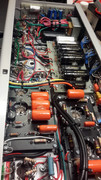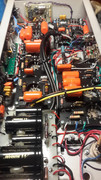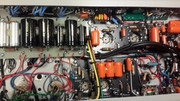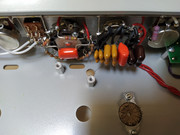For the zenerdiode you selected: Going for a 5 watt zener is a bit over the top. It will probably work, but a zener needs to be at a correct bias. For it to work correctly there needs to be a minimum amount of current trough the zener. If you calculate the current trough the tube you will find 1,3 mA anode current for one half of the tube. Times two anodes makes 2,6 mA. The current a zener can handle is easy to calculate, just divide the power rating by the voltage rating. In my case 1,3/120 = 10,8 mA. This is 4 times what you need and the zener has enough current to function correct.
As for noise, there is none. I could not detect any extra noise from the zener. The reverse diode doen't make noise and can't produce noise since it is tied to ground on both sides. (The B+ beeing AC ground trough the filtercap).
The reverse diode i would consider a necessity. You could put this on the filtercap board over the cap for the screen voltage. I would have done this myself if i would have known the need for it in advance.
The zener is optional. I can hear a sound diffrence, but only in the very low frequency's. There is either more bass or it is more loose on a lower voltage. This makes sense i guess because V7 in the middle of the negative feedback loop (negative feedback from the speakeroutput on V6 and the powertubes). The lower voltage on V7 wil change this loop and the speakerdampening somewhat. Also the grid voltage on the powertubes is 1 volt lower (-47) on the lower voltage than on the high voltage (-46).
On the other hand there could be to much worry over the high voltage on V7. I have been looking further and have found in older datasheets that the Va0 max = 550 volt for a 12ax7. This is the maximum anode voltage with zero platecurrent. The 300V max rating is (i guess) at max anode dissipation. Since both plates stay way below the max dissipation, maby the voltage is no issue at all. I did some temperature measurements with an inrared meter and here was only 3 degrees (celcius) diffrence between V7 and V6. So chances are there is nothing to worry about in regard to the higher volage on V7. I don't know myself if i will leave the zener in or not . I used a huge output transformer (
http://www.classictone.net/40-18072.html) and allready have a lot of low end. The reverse diode stays fur sure.








